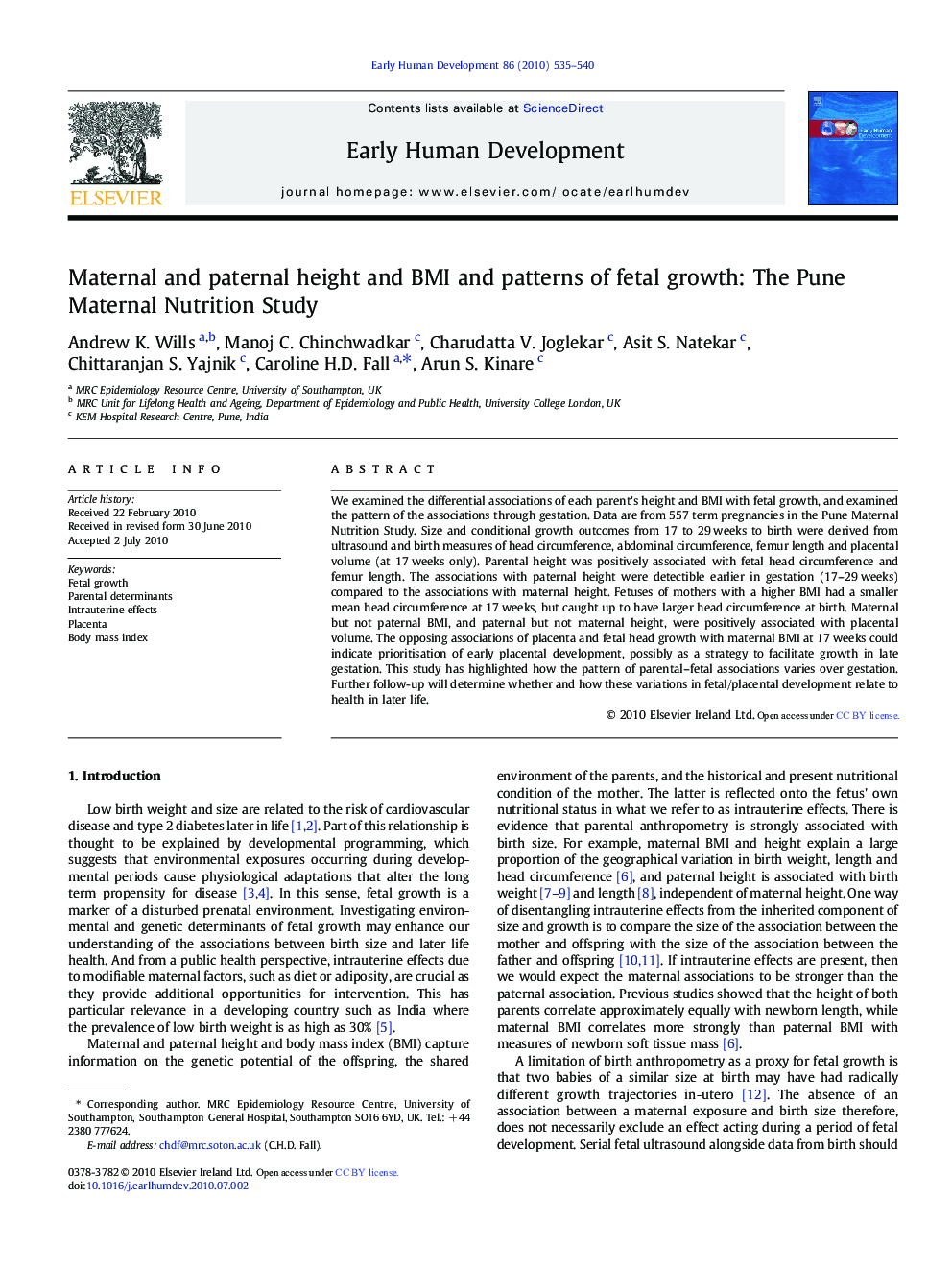| Article ID | Journal | Published Year | Pages | File Type |
|---|---|---|---|---|
| 6172218 | Early Human Development | 2010 | 6 Pages |
We examined the differential associations of each parent's height and BMI with fetal growth, and examined the pattern of the associations through gestation. Data are from 557 term pregnancies in the Pune Maternal Nutrition Study. Size and conditional growth outcomes from 17 to 29Â weeks to birth were derived from ultrasound and birth measures of head circumference, abdominal circumference, femur length and placental volume (at 17Â weeks only). Parental height was positively associated with fetal head circumference and femur length. The associations with paternal height were detectible earlier in gestation (17-29Â weeks) compared to the associations with maternal height. Fetuses of mothers with a higher BMI had a smaller mean head circumference at 17Â weeks, but caught up to have larger head circumference at birth. Maternal but not paternal BMI, and paternal but not maternal height, were positively associated with placental volume. The opposing associations of placenta and fetal head growth with maternal BMI at 17Â weeks could indicate prioritisation of early placental development, possibly as a strategy to facilitate growth in late gestation. This study has highlighted how the pattern of parental-fetal associations varies over gestation. Further follow-up will determine whether and how these variations in fetal/placental development relate to health in later life.
